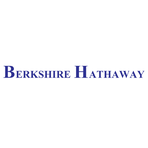Abercrombie & Fitch: Navigating Tariffs and Market Challenges
May 30, 2025, 9:35 am

Location: United States, North Carolina, Charlotte
Employees: 10001+
Founded date: 1998
Total raised: $2M

Location: United States, Nebraska, Omaha
Employees: 10001+
Founded date: 1839
Total raised: $1.9B
Abercrombie & Fitch is a name that once echoed through the halls of American retail. Now, it finds itself in a precarious dance with tariffs and market pressures. Despite slashing its profit outlook, the company’s stock soared more than 14% after it reported fiscal first-quarter results that exceeded expectations. This paradox is a testament to the complexities of modern retail.
The company’s latest earnings report revealed a mixed bag. On one hand, Abercrombie posted earnings per share of $1.59, surpassing analysts' expectations of $1.39. Revenue climbed to $1.10 billion, beating the forecast of $1.07 billion. However, the silver lining came with a cloud. The retailer cut its full-year earnings guidance, now expecting between $9.50 and $10.50 per share, down from a previous range of $10.40 to $11.40. The culprit? Tariffs.
Tariffs are the unseen hand that can squeeze profits. Abercrombie anticipates a $50 million hit from these levies, primarily affecting imports from China and other countries. The company’s operating margin forecast also took a hit, now projected between 12.5% and 13.5%, down from 14% to 15%. This is a stark reminder that even in a world of rising sales, external factors can loom large.
Despite these challenges, Abercrombie’s stock surged. Investors responded positively to the company’s revenue guidance, which was slightly raised to a growth expectation of 3% to 6%. This optimism is a reflection of the broader market sentiment, where even a hint of good news can spark a rally. Abercrombie’s stock had previously plummeted nearly 49% this year, making this rebound a welcome relief.
The company’s performance varied across its brands. Hollister, the teen-focused chain, shone brightly with a 22% sales increase, achieving its best first-quarter net sales ever. In contrast, Abercrombie’s namesake brand struggled, with a 4% decline in sales. This divergence highlights the shifting dynamics within the retail landscape. While one brand thrives, another falters.
Abercrombie’s CEO, Fran Horowitz, acknowledged the challenges faced by the Abercrombie brand. The company is grappling with a winter inventory that required discounting, a strategy that can backfire when consumers are less inclined to shop. The launch of a wedding shop last year set a high bar, making current sales figures appear lackluster in comparison.
To counteract these challenges, Abercrombie is pivoting. The launch of a vacation shop aims to capture consumer interest during the summer months. This strategic move reflects a broader trend in retail: the need to adapt quickly to changing consumer preferences. The vacation shop, alongside a renewed focus on swimwear, could provide the necessary boost to revive sales.
The company’s efforts to diversify its sourcing network are also noteworthy. Once heavily reliant on China, Abercrombie has shifted its supply chain to include countries like Vietnam, Cambodia, and India. This strategic pivot is essential in mitigating the impact of tariffs. By reducing dependence on a single market, Abercrombie aims to safeguard its profitability.
However, the road ahead is fraught with uncertainty. The ongoing tariff situation remains a significant concern. While Abercrombie is working to offset costs without implementing broad price increases, the potential for further tariff hikes looms large. The company’s cautious approach reflects a desire to protect long-term investments while navigating immediate challenges.
Investors are left to ponder the implications of these developments. Abercrombie’s ability to adapt will be crucial in the coming months. The retail landscape is shifting, and companies must be agile to survive. The success of the vacation shop and the overall performance of the Abercrombie brand will be closely watched.
In the broader context, Abercrombie’s situation mirrors the challenges faced by many retailers today. The interplay of tariffs, changing consumer behavior, and the need for innovation creates a complex environment. Companies must balance short-term pressures with long-term strategies to thrive.
As Abercrombie & Fitch moves forward, it must remain vigilant. The retail world is a battlefield, and adaptability is key. The company’s recent stock surge is a glimmer of hope, but the challenges ahead are formidable. Only time will tell if Abercrombie can reclaim its former glory or if it will become another casualty of the retail apocalypse.
In conclusion, Abercrombie & Fitch stands at a crossroads. The company’s ability to navigate tariffs, adapt to market changes, and innovate will determine its future. Investors are watching closely, and the stakes are high. The retail landscape is unforgiving, but with the right strategies, Abercrombie can still find its way back to the forefront of American fashion.
The company’s latest earnings report revealed a mixed bag. On one hand, Abercrombie posted earnings per share of $1.59, surpassing analysts' expectations of $1.39. Revenue climbed to $1.10 billion, beating the forecast of $1.07 billion. However, the silver lining came with a cloud. The retailer cut its full-year earnings guidance, now expecting between $9.50 and $10.50 per share, down from a previous range of $10.40 to $11.40. The culprit? Tariffs.
Tariffs are the unseen hand that can squeeze profits. Abercrombie anticipates a $50 million hit from these levies, primarily affecting imports from China and other countries. The company’s operating margin forecast also took a hit, now projected between 12.5% and 13.5%, down from 14% to 15%. This is a stark reminder that even in a world of rising sales, external factors can loom large.
Despite these challenges, Abercrombie’s stock surged. Investors responded positively to the company’s revenue guidance, which was slightly raised to a growth expectation of 3% to 6%. This optimism is a reflection of the broader market sentiment, where even a hint of good news can spark a rally. Abercrombie’s stock had previously plummeted nearly 49% this year, making this rebound a welcome relief.
The company’s performance varied across its brands. Hollister, the teen-focused chain, shone brightly with a 22% sales increase, achieving its best first-quarter net sales ever. In contrast, Abercrombie’s namesake brand struggled, with a 4% decline in sales. This divergence highlights the shifting dynamics within the retail landscape. While one brand thrives, another falters.
Abercrombie’s CEO, Fran Horowitz, acknowledged the challenges faced by the Abercrombie brand. The company is grappling with a winter inventory that required discounting, a strategy that can backfire when consumers are less inclined to shop. The launch of a wedding shop last year set a high bar, making current sales figures appear lackluster in comparison.
To counteract these challenges, Abercrombie is pivoting. The launch of a vacation shop aims to capture consumer interest during the summer months. This strategic move reflects a broader trend in retail: the need to adapt quickly to changing consumer preferences. The vacation shop, alongside a renewed focus on swimwear, could provide the necessary boost to revive sales.
The company’s efforts to diversify its sourcing network are also noteworthy. Once heavily reliant on China, Abercrombie has shifted its supply chain to include countries like Vietnam, Cambodia, and India. This strategic pivot is essential in mitigating the impact of tariffs. By reducing dependence on a single market, Abercrombie aims to safeguard its profitability.
However, the road ahead is fraught with uncertainty. The ongoing tariff situation remains a significant concern. While Abercrombie is working to offset costs without implementing broad price increases, the potential for further tariff hikes looms large. The company’s cautious approach reflects a desire to protect long-term investments while navigating immediate challenges.
Investors are left to ponder the implications of these developments. Abercrombie’s ability to adapt will be crucial in the coming months. The retail landscape is shifting, and companies must be agile to survive. The success of the vacation shop and the overall performance of the Abercrombie brand will be closely watched.
In the broader context, Abercrombie’s situation mirrors the challenges faced by many retailers today. The interplay of tariffs, changing consumer behavior, and the need for innovation creates a complex environment. Companies must balance short-term pressures with long-term strategies to thrive.
As Abercrombie & Fitch moves forward, it must remain vigilant. The retail world is a battlefield, and adaptability is key. The company’s recent stock surge is a glimmer of hope, but the challenges ahead are formidable. Only time will tell if Abercrombie can reclaim its former glory or if it will become another casualty of the retail apocalypse.
In conclusion, Abercrombie & Fitch stands at a crossroads. The company’s ability to navigate tariffs, adapt to market changes, and innovate will determine its future. Investors are watching closely, and the stakes are high. The retail landscape is unforgiving, but with the right strategies, Abercrombie can still find its way back to the forefront of American fashion.
